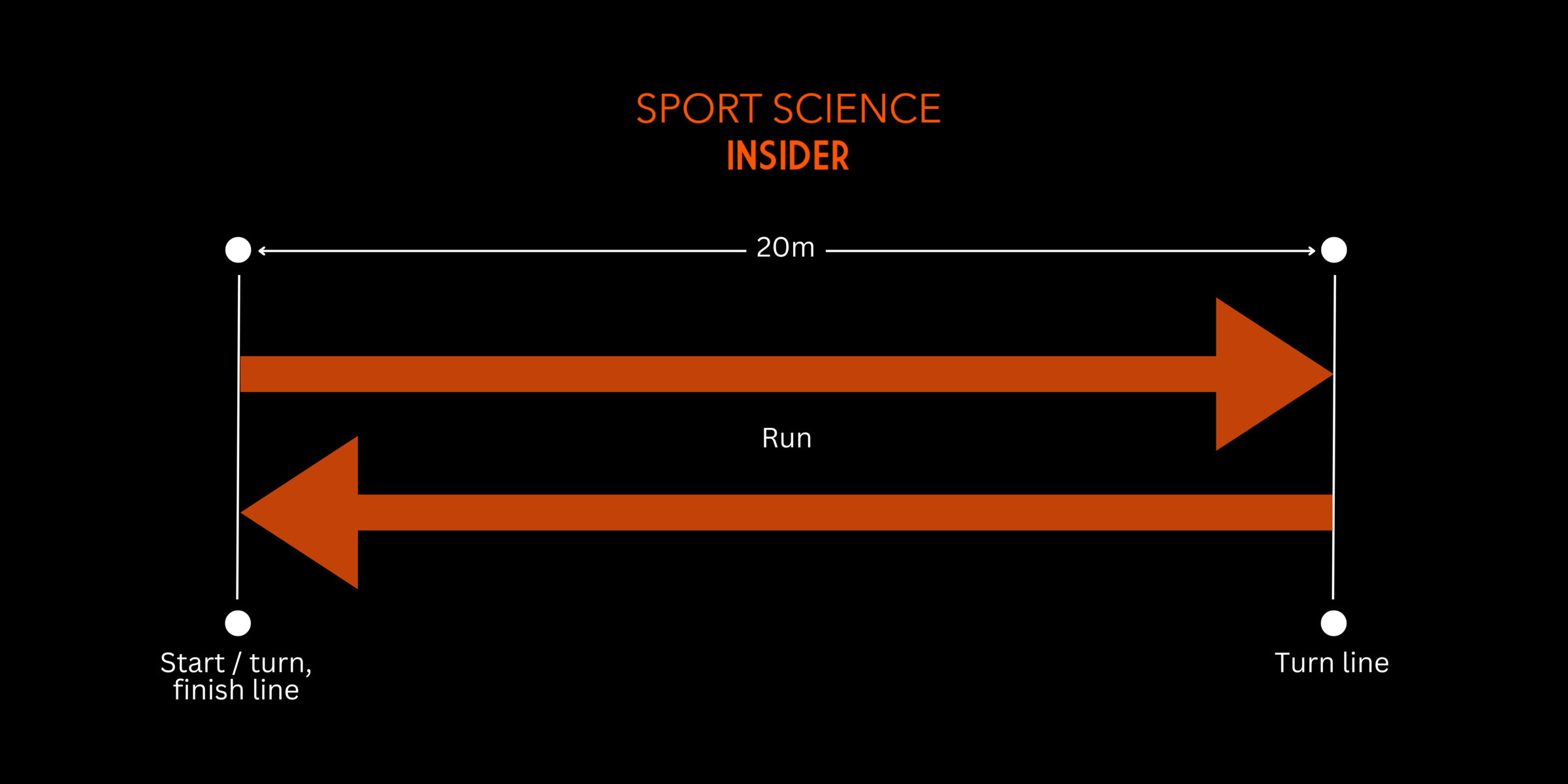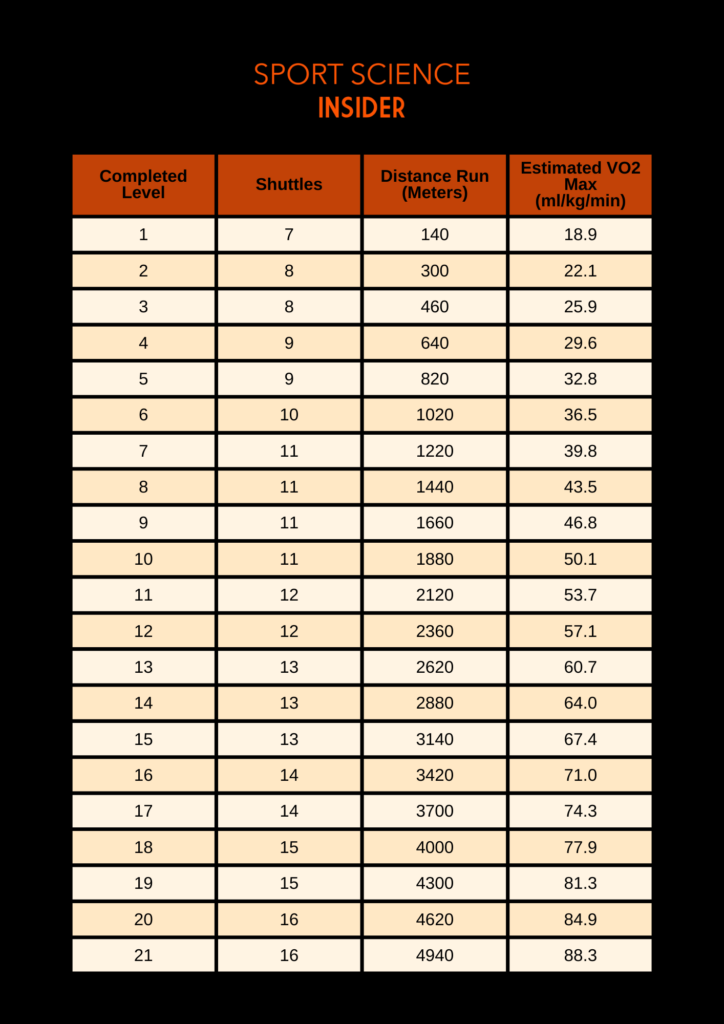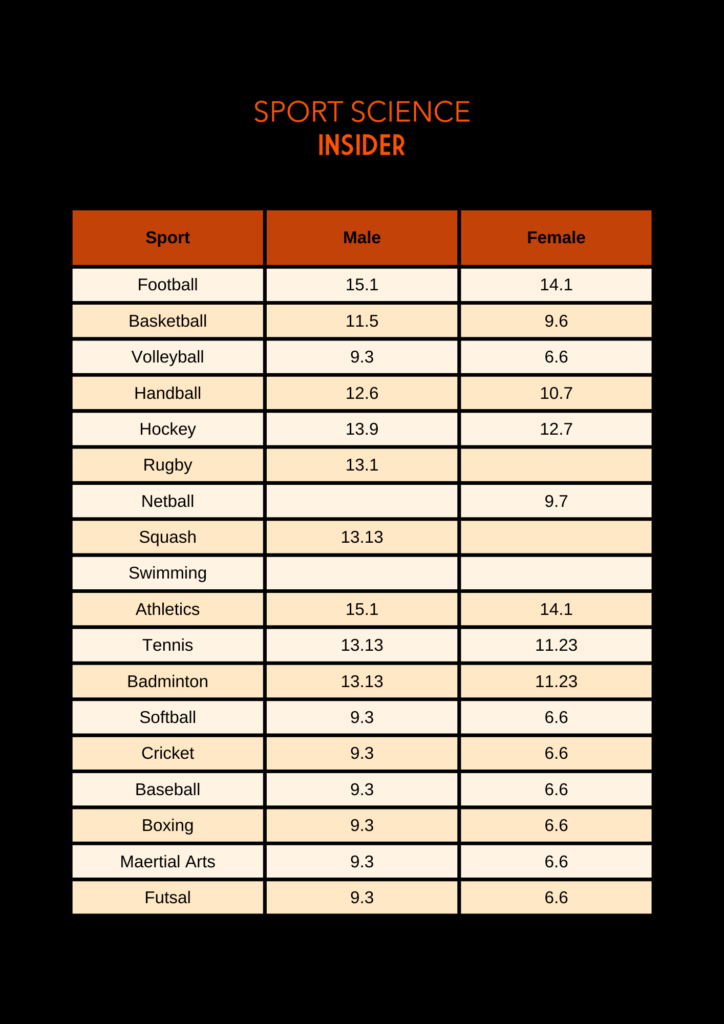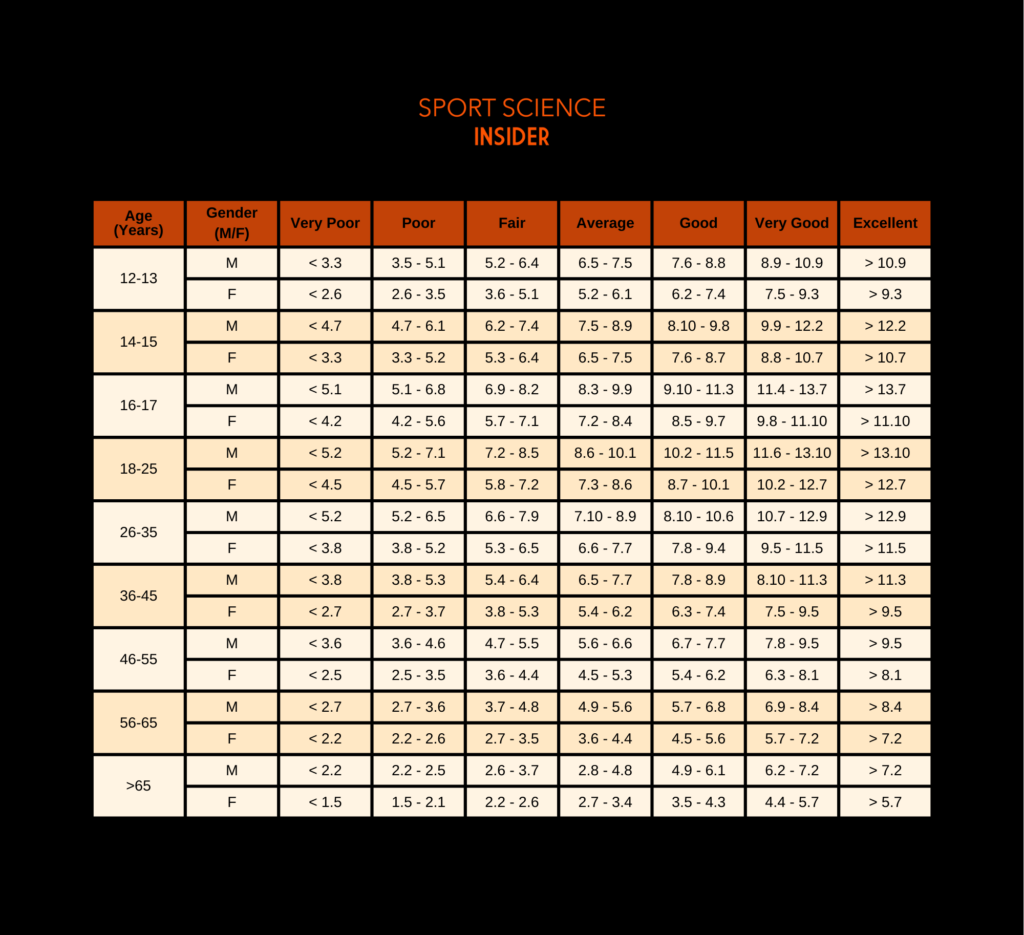
In this article, we’re going to cover what the [Beep] Multistage Fitness Test is, how to perform the test and provide normative data for athletes competing in various sports and at various levels.
The Multistage Fitness Test, also known as the Beep Test, Bleep Test or 20-Meter Shuttle Run Test, was developed in 1983 by Luc Leger at the University of Montreal.
In the test, athletes continuously run back and forth between two points that are 20m apart. Each running interval is synchronised with a pre-set audio tone, which plays a beep at regular intervals – which is where the ‘beep’ test gets its name from.
As the test progresses, these intervals gradually shorten, requiring athletes to increase their running speed. Eventually, they will reach a point where it becomes impossible for them to keep pace with the beeps, signalling the end of the test.
There are 11 variations of this test, but the most commonly used test is the EuroFit variation, which is structured into 21 levels, with each level lasting approximately 62 seconds. It starts at level 1, where athletes run at 8.0 kilometres per hour and progresses to level 2, at 9.0 kilometres per hour. For each level thereafter, the speed increases by 0.5k kilometres per hour, with three quick beeps indicating the change in speed. The athlete’s score is determined based on the highest level they reached before they can no longer keep up with the beep.

Set up for the [Beep] Multistage Fitness Test
Here is the test in action:

Please note that the estimated VO2 max remains constant for each level, regardless of the number of shuffles completed at that level. This arises from the fact that the running speed remained unchanged throughout that level.
Beep test normative data for the level achieved by athletes from different sports, genders and ages can be seen in the tables below.

We can also look at normative data for the level achieved of the Beep Test from males and females from a range of ages too. This data is from Top-End Sport, and they recommend using this data for active individuals.

We recommend taking caution when comparing your score to normative data here. While we’ve researched extensively for sources, we couldn’t verify the specifics of the data or the individuals or teams it represents. We recommend creating your own database of normative data, leveraging your team data or that of other athletes within your group over time to develop a context-specific portfolio of information for you.
A good beep test score depends on many factors, including your sport, the level of sport you play, age and gender. Look at the tables above to help guide what would be good for your context.
Beep test advantages: It’s a simple test that is fast, easy to set up and relatively budget-friendly. It allows for a large group of athletes to complete the test at the same time.
Beep test disadvantages: Results can be greatly influenced by a number of factors, including motivation, social dynamics, pacing strategies, running efficiency, turning technique and weather (if outside). Set-up errors can also influence results, potentially leading to a 10-20% variation in results if the set-up deviates by just one meter. In addition, tracking missed beeps can pose a challenge, particularly when testing a large group of athletes. Due to its continuous nature, the test lacks specificity to intermittent endurance sports, such as football and netball. There are also issues with the validity of predicted VO2 max.
To maximise the reliability of the multistage fitness [beep] test, there are several factors we must consider:
The Beep Test has long been considered a reliable tool for estimating VO2 max. However, a more recent study conducted by Cooper and their team in 2005, discovered that the equations commonly used tend to underestimate VO2 max when compared to the gold standard lab tests.
As a result, the Beep Test may not offer a valid prediction of VO2 max. This is something for coaches and athletes to bear in mind when deciding which test to opt for and what data they wish to use from it.
There are a number of alternatives to the beep test, these include:
The Beep test is widely used by various organisations, including the police, fire and defence forces, whereby they state a certain level as their entry requirements. The level required may differ between organisations and even between departments.
Sports with a high aerobic demand may use the Beep Test, typically within their pre-season testing. These sports include:
However, many of these sports have gradually transitioned to using the Yo-Yo test instead. This shift is likely attributed to the Yo-Yo Test’s intermittent nature, which better reflects the demands of their sport.
Your foot must be on or over the line – it’s worth emphasizing that this is only one foot, as this strategy is recommended when the pace intensifies during the test.
Officially, no. However, most people provide one warning if there is a small delay in reaching the line before the beep. Following that, if you don’t make the next shuttle, then you will not be able to continue. This approach allows for some flexibility to ensure missing the beep is due to reaching your physiological limits rather than an error in timing.
Athletes must run the 20-meter shuttle and reach the turn line in time with or before the ‘beep’ sounds. If they arrive before the beep, they must wait there until the ‘beep’ sounds, indicating they can start the next shuttle. This is intended to make sure that you increase your pace in line with the audio cues rather than maintaining a constant pace.
The beep test is a reliable test, however, its validity has been brought into question in a study by Cooper and their team in 2005. They discovered that the equations commonly used tend to underestimate VO2 max when compared to the gold standard lab tests.
As a result, the Beep Test may not offer a valid prediction of VO2 max. This is something for coaches and athletes to bear in mind when deciding which test to opt for and what data they wish to use from it.
From scouting the internet, we can’t find any concrete evidence of anyone reaching level 21 in the Beep Test. This isn’t to say someone hasn’t or isn’t capable. Elite endurance athletes who tend to possess the highest VO2 max levels and may therefore be capable of beating the beep test, might opt for laboratory tests to measure their VO2 max instead, as they provide a more valid assessment compared to the Beep Test.
The multistage fitness [beep] test was created as a budget-friendly and practical method of estimating an individual’s VO2 max, or maximum aerobic capacity, which can be used as a measure of how aerobically fit they are.
The multistage fitness [beep] test, provides an estimate of an athlete’s maximum oxygen uptake (VO2 max). This estimation serves as an indicator of their aerobic fitness level, representing a key aspect of their overall cardiovascular fitness.
The Beep Test requires you to run 20-meter shuttles continuously until exhaustion. The total distance you can run in the beep test is 4,960 meters, although if you’re running that, you should sign up for the Olympics!
Level 15 on the beep test, is the equivalent of 3,140 meters, which you can see in the table below.

The Beep Test, also known as the Multistage Fitness Test, involves continuous running between two points 20-meters apart, synchronized with audio beeps at increasing intervals.
The test can be used for a couple of purposes:
The Beep test is relatively budget-friendly and practical for large groups of athletes to complete at the same time. However, we recommend considering why you want to use this test. If it is a requirement for an organisation, then carry on!
But, if it’s for a sport with a high aerobic demand that is intermittent, or you want to estimate an athletes VO2 max, exploring alternative tests such as the Yo-Yo test or laboratory testing may align better with your goals.
How useful was this post?
Click on a star to rate it!
Average rating 3.9 / 5. Vote count: 8
No votes so far! Be the first to rate this post.
We are sorry that this post was not useful for you!
Let us improve this post!
Tell us how we can improve this post?